by M.H. Srinarahari & Arvind Mishra
As per the Constitution of India there are twenty-two recognized official languages. Besides, there are thousands of dialects in use. However, Hindi is India’s lingua franca and also the official language. Some of southern Indian states emphasize the use of their regional languages along with English and avoid Hindi. This article is a humble attempt to present a bird eye view of the status of science fiction as observed in many of the country’s languages with a focus on Hindi.
SF and Indian Mythology
The Ramayana, one of the two classical Indian epics fundamental for Hinduism, vividly describes a flying vehicle named Puspak Vimana. The Mahabharata, the world’s most extensive religious epic, six times the length of the Bible, includes interesting concepts such the amazing intelligent designs and architecture of palaces, the birth of mighty warriors named Kaurvas in a way that is akin to present day test tube babies, a live telecast of the ‘mahabharat‘ war and stories depicting time dilation. The Vedas, Upanishads, Katha Sarithsagar and many incantations refer to the science of ancient time and its thought experiments. With the advent of appropriate technologies these ideas are now increasingly gaining importance.
Historical Perspective
Modern Indian Science Fiction began with the publication of “Aashcharya Vrittant” (“A Strange Tale”), written by Ambika Dutta Vyas, in the Hindi magazine Piyush Pravah in 1884. “Niruddesher Kahini” (“The Story of the Missing One”) by a scientist named Jagadish Chandra Bose was published in Bengali in 1896. The story is about using a drop of hair oil named Kuntalini to pacify the oceanic storms. This concept was later described as the “butterfly effect” where a small change can have far reaching consequences. Among the first Marathi science fiction stories “Tareche Hasya” (“The Laughter of a Cable”) by S.B. Ranade (1911) is often referred.
Translations
A translation of Jules Verne’s novel From The Earth To The Moon‘ (1865) into the Malayalam language was published in Kerala Kokila. In Hindi the same novel was published in a concise form titled Chandra Lok Ki Yatra, written by Babu Keshav Prasad Singh, in the reputable mainstream literary magazine Saraswathi in 1900. Right from the beginning of the second half of the twentieth century science fiction translations gained momentum in the Assamese language. To name just a few: Adrisya Manav (1956) by Hemabala Das was a translation of The Invisible Man by H.G. Wells. Another translation of the same book was Adrishya Manuhjon (2001) by Abhijit Sarma Baruah, Kshiren Roy’s translated work Sagaror Taliyedi’ Kurihazar, based on Jules Verne’s Twenty Thousand Leagues Under the Sea, and Dinesh Chandra Goswami’s translation of Arthur C. Clarke’s 2001: A Space Odyssey are all milestones in the annals of Assamese SF. Likewise, noted Hindi SF writer Naval Bihari Mishra translated many popular western SF stories into Hindi.
The First Wave
“Ashcharyajanak Ghanti” (“A Wonderful Bell” – based on the principle of resonance) by Satya Dev Parivarjak was published in 1908 in the mainstream literary magazine Saraswati. It has been reported that during those years Lala Srinivas Das, Gopal Das Gahmari and others wrote works of science combined with fairy tale themes. The significant and seminal works in Hindi by Devaki Nandan Khatri deserve special mention. His magnum opus was Chandrakanta (1918) and later its sequel Chandrakanta Santati. Both became so popular that people in South India learned Hindi to read these classics. These writings introduced to the audience a new genre called “Tilism” – hitherto unknown worlds of new technologies and wonderment. Durga Prasad Khatri, who was son of Devakinandan Khatri, followed the literary tradition of his father and wrote many Tilism stories and novels. Almost at the same time Aacharya Chatursen Shastry. a prolific writer of novels, contributed three SF works, namely Khagras (The Eclipsed Moon), Neelmani (The Sapphire), and Adbhut Manav (The Amazing Man). Devakinandan Khatri’s son Durga Prasad Khatri published, in the footsteps of his father, Bhooth Nath (1913), Pratishodh (1925) and Lal Panja (1925), followed by Rakt Mandal, Swarg Puri, Safed Shaitaan and other novels. Renowned Hindi scholar and globetrotter Rahul Sankrityayan wrote a science fiction novel titled Baisaveen Sadi (The Twenty Second Century), published in 1924, imagining the future of humanity 200 years from his time.
Inspiring Events
Due to the negative impact of World War II, the development of Science Fiction in India suffered a hitch. But owing to a successful moon landing, the discovery of quarks, the advent of TV, computers and the Internet, deciphering the human genome and cloning, the movement gained momentum again. With these elements in the background, people in the scientific world began publishing science fiction in journals in the 1960ies with the aim of popularizing science.
The flow of publications and translations went on uninterruptedly in Hindi. Noted authors included Aacharya Chatursen Shastri, Gurudutt, Yamuna Datt Vaisnava Ashoka, Naval Bihari Mishra, Kailash Shah, Maya Prasad Tripathi, Shukdev Prasad and Devendra Mewari who regularly published science fiction in mainstream media.
The Second Wave
The second wave in sf writing in India could be traced back to the efforts of the Marathi Vidnyan Parishad, Mumbai (MVP) – an educational institution – which conducted SF story writing competitions. Drs. Bal Phondke and Jayanth Narlikar emerged as the pioneers in the field of Indian science fiction in general and in Marathi science fiction in particular. Many Hindi SF writers also contributed prominently to the second wave which is still in vogue. Writers like Devendra Mevadi, Harish Goyal, Arvind Mishra, R.R. Upadhyaya, Zakir Ali ‘Rajnish’, Zeashan Haider Zaidi, Kalpna Kulshreshtha, Amit Kumar, Swapnil Bhartiya, Bushra Alvera, Pragya Gautam, Kshama Gautam, Dr. Arvind Dubey and Rishabh Dubey (aka Kridious) are among them. Most of them are still actively contributing to the enrichment of the genre.
It seems pertinent at this point to briefly present the development of sf writing in regional languages of India.
SF in Marathi
As mentioned above Dr. Jayant Narlikar and Dr. Bal Phondke, the pioneers of the second wave, inspired authors such as Laxman Londhe, Niranjan Ghate, Dr. Yeshwant Deshpande, Meghashri Dalvi, Smita Potnis and others to continue a trend of sf writing in mainstream Marathi literature. A.P. Deshpande, secretary of the Marathi Vidnyan Parishad, played a key role in popularizing not only Marathi sf but Indian sf writing in general by organizing sf workshops and conferences in the state of Maharashtra.
SF in Tamil and Telugu
The first work of Tamil science fiction was Bharathi Noolgal (1959) by Subramanya Bharathi. The first Tamil sf movie was Nella Thambi (1949). Representative writers in Tamil are Sujatha Rangarajan and Nellai S. Muthu. The only pointer in the Telugu language is K.R.K. Mohan.
SF in Assamese
Hariprasad Baruan published the first Assamese sf in Awahan in 1937. A story in this magazine entitled “Biracharitiyar Desh” describes the adventures of an inhabitant of the planet Jupiter. In 1938, Nagendra Narayan Choudhury published “Rasayan” in Awahan.
Seminal works of Dinesh Chandra Goswami include the short story “Kankal” (1970) along with the anthologies Bhadrata Mapak Yantra (1985), Odor Absorbing Notebook (1985) and the sf dramas Tritonor Abhijan (1985), Ek Tarangar Dare (1993) and Abhinna Hriday (2003). His sf novels include Ejak Jonakir Jilikani (1992), Sabda, Nirantara Sabda (1992) and Usma Prabha (1993). Goswami has also published forty short fictions for the monthly magazine Bikol. His novels Ati Bisista Samaj (1999) and Mananiya Sampraday (2000) were adapted for television serials.
SF in Malayalam
The origin of Malayalam science fiction lies in the efforts of P.T. Bhaskara Panikker and N.V. Krishna Varier who made pioneer contributions in the magazines published by Kerala Sastra Sahithya Parishad, a prominent science and literature organization in Kerala, in the year 1952. G.S. Unnikrishnan Nair and C. Radhakrishnan are the the most notable writers. Balabhumi, a children magazine, has also published sf works.
SF in Bengali
J.C. Bose’s sf story “Niruddesher Kahini” appealed Rabindranath Tagore, the first Nobel laureate from India. The story was later revised and renamed “Palatak Tufan” (“Runway Cyclone”).
Satyajit Ray, a prolific writer and famous movie director, considered one of the greatest in the history of cinema, was also a prominent and influential figure in Bengali science fiction. In 1962 Ray wrote the story “Bankubabur Bandhu” which featured a friendly alien. When Arthur C. Clarke asked Satyajit Ray to write a science fiction script for a Hollywood production, he took up this story and turned it into a script titled “The Alien” . His story “The Diary of Professor Shanku” (1965) gained wide popularity. Unlike Frankenstein’s monster, Ray’s creation of artificial intelligence does not pose a threat to its creator. While J. C. Bose is considered the father of Bengali Sf, Ray and others like Premendra Mitra and Adrish Bardhan played key roles in popularizing and developing the genre.
As Subha Das Mollick, who analyzed Bengali SF, notes: “Both the real scientist Bose and the fictional character Shanku had turned their scientific inquiry to understanding the ebb and flow of life’s energy trampled over by mankind.” Furthermore, as Isaac Asimov experiments with the variations in the three laws of robotics so does Ray with artificial intelligence in his stories. “Anukul” is one such classic work of Ray that has been turned by Sujay Ghosh into a movie of the same title in 2016. In 2017, a long film titled The Bounty premiered at the 23rd Kolkata International Film Festival. Sudipto Shankar Roy is now producing a sequel to The Bounty.
Bengali sf and its criticism have been further enriched by Adrish Bardban, Anish Deb, Meenakshi Chattopadhyay, Narayan Sanyai, Niranjan Sinha, Sirshendu Mukhopadhyaya , Bodhisattva, Anwesha Maity and others.
Conclusively Bengali Science Fiction has grown enormously in recent years. One can browse the online magazine Kalpabiswa, edited by Dip Ghosh, to catch the current trends. A special position is occupied by Amitav Ghosh, a world-renowned mainstream writer, writing in English and Bengali, who was in discussion for the Nobel Prize in Literature in 2025. His reputation has peaked with the Ibis trilogy (2008 – 2015), but he has also written maybe the greatest science fiction novel ever coming from India: The Calcutta Chromosome (1996), a fictional account of the discovery of the malaria infection route that has won the Arthur C. Clarke Award in 1997.
SF in Kannada
The origins of science fiction written in Kannada can be traced back to the publication of Nagavarma’s work Karnataka Kadambari (10th century) which describes an elaborate process of preserving the dead body of the protagonist Pundarika in ice. During that period Shivakotyacharya’s novel Vaddaradhane was published. Rajashekhara Bhoosanoor Mutt made an entry with “Holiday Planet” in 1965 and has remained a prominent writer for five decades.
The magazines Yanthra Manava, edited by Srinarahari, and Kannada Vyjnanika Kathegalu, edited by Subhashini, were published at the turn of the century. They have dealt with machine phobia, ecology, feminism, and hardcore elements of physics, and botany. A special mention has to be made of Bairnatti and Santhosh Kumar Mehandale for their continuous contributions to enriching the sf world in Kannada. Bhairnatti‘s contribution is especially noteworthy as he translated many stories from other languages into Kannada.
Some other highlights of sf in Kannada include:
Guptagamini, a collection of ten sf stories by Savitha Srinivas, a renowned female sf writer, published in 2013; Kannada Vaignanika Kathegalu (2000), an anthology with twelve representative sf stories of Kannada writers; Naleya Kathegalu (2008), an anthology with 14 representative sf stories, published by Sahitya Akademi, an established literary publication center. A trilogy of sf novels have also been authored by Savitha Srinivas, the first of its kind in Kannada: Triloka Sanchari Neere (2019), Gaalakke Sikka Chandira (2020) and Mugilagala… Jagadagala (2025). A well received collection of ten sf stories in Kannada is Bananchina Aache (Beyond Horizons, 2022) by Dr. Shantala Anil. She has also penned two novels, 3019 AD (2021) which is a mystery story about superhumans set in 3019A.D., and Devaragalu moorae genu (Playing God, 2023), which is about genetic manipulation and the greed of people.
SF story writing workshops were conducted for children of the age group 13-15 in the entire state by IASFS. One of its results was the anthology 101 Science Fiction Short Stories written by participating children, published in 2004. Similarly, a workshop was conducted for science writers and scientists and the workshop product was brought out as Mundanondu Kaalada Kathegalu (2006) by the National Book Trust, India.
A women Science Writers workshop was also held (2012). All workshop proceedings were edited by Srinarahari and Bhoosnurmutt. In addition, Mayura, Sudha Taranga, Tushara, and other popular mainstream magazines and newspapers such as Prajavani and others brought out and are still bringing special issues with sf short stories.
Notable Events
A milestone event was the publication of It Happened Tomorrow (1993), edited by Bal Phondke and published by the National Book Trust, the government of India’s premier publication enterprise. The hitherto unique feature of the anthology was a dozen and a half short stories originally written in various vernacular languages, translated into English for the first time. This anthology was later made available in Hindi and in many other regional languages.
Marathi Vigyan Parishad made a pioneering attempt in holding many science fiction conference sessions since 1996. Indian sf criticism took off with the publication of Dr. Srinarahari’s and Upinder Mehan’s articles in global journals and magazines in 1996 and 1998 respectively.
The prestigious Ramlal Anand College of Delhi University organized an event focusing on science fiction, emerging trends of AI and society on March 19th, 2025 . Professor Urvashi Kuhad was the organizer who also convened the discussion sessions.
The audience participated enthusiastically discussing the subject with experts Arvind Mishra, Sami Ahmad Khan , Archana mirajkar and Pragya Gautam during these panels and in open sessions that followed.

The Encyclopedia of Indian Science Fiction, focusing on Hindi writers, under the chief editorship of Harish Goyal, was also unveiled on the occasion. The encyclopedia is the first ever praiseworthy effort in India to succinctly compile comprehensive information about Hindi science fiction, including articles on contributions to the genre in other languages.
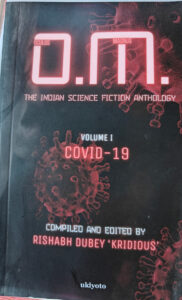
During the period 2020-22, when the world was gripped by the terror of the COVID pandemic, more than two dozen stories on the disaster were written by Indian science fiction writers. Two sf anthologies inspired by the crisis were published in India: the Hindi anthology Covidnama, jointly edited by Dr. Manoj Patairia and Dr. Arvind Dubey, and the English anthology Covid-19, edited by Rishabh Dubey (aka Kridious). Both books were well and widely received by readers.
Indian SF in English
Prominent writers of Indian sf in English are Anil Menon, Vandana Singh, Archana Mirajkar, Ashok Banker, Rishab Dubey, Sami Ahmed Khan, Nellai S Muthu,Anupam Bhattacharya, Arvind Risbud, Arya Madan Mohan, Ashok Banker, Bharathi Ramachandran, Bhushan Kapoor, Dilip M.Salwe, G.P.Phondke, Harshita Verma, Jayant V. Narlikar, Kenneth Doyle, KRK Mohan, Laxman Londhe, Meyhna Sujata Mitra, Mukul Sharma, Niranjan Gagte, R.N.Sharma, Radha Ganguli, Rajashekhara Bhoosanoor Mutt, Ramesh Deshpande, Salil Chowdhary, Sanjay Havanoor, Sathyajit Ray, Shalini Tuli, Sourabh Bhattacharya, Srinarahari, Subodh Jawadekar, Surekha Nagar, Surekha, HS Bairnatti, Dip Ghosh, Salik Shah, Balaji Navale, Varun Sayal and others.
Vandana Singh, Hari Kumar Nair, Ashish Mahabal, Divyaraj Amiya, Reema Sarwal, Superno Banerjee and others are contributing to Indian science fiction from outside of the country. Obviously most of the Indian sf writings in English are considerably influenced by western literature but writers have proved skillful in including elements of Indian culture in their stories. Sami Ahmad Khan’s novel Aliens in Delhi is a case in point.
Adbhut.in is a web portal launched in 2003 to popularize Indian science fiction and fantasy. It was founded by editor and author Dinkar Charak, known for his English short stories which blend scientific concepts, dry humor, and unusual human reactions to scientific advancements.
Themes
Most of the Indian sf works could be classified under the headlines “robot stories” or “alien encounters”. In those stories the homo sapiens usually triumphs over the extra terrestrials. Gedanken experiments are carried out in fields such as ecology, biotechnology and physics. Some stories are about humanoid robots following Asimov’s famous three laws of robotics. Supercomputers are also a frequent topic. In conjuction with Indian traditional norms of ethics and morality such stories tend to highlight the qualities of a perfect human being and usually have happy endings underlining a contrast with western dystopic sf.
Bollywood Movies
Many Indian sf movies from Kaadu (1956) through Mr. India (1972) and Endhiran (2011) had only a thin science fictional element intermingled with romance. Two noteworthy exceptions are Ra One (2011) and 2.0 (2018). 2.0 has been released in multiple languages and was an all-time record box office hit.
Associations
There are two prominent registered science fiction associations in the country, namely the Indian Association for Science Fiction Studies, Bangalore, and the Indian Science Fiction Writers’ Association, Faizabad in the district Ayodhya (Uttar Pradesh). Their aim is to popularize science, to promote inter-disciplinary studies, to provide platforms for creating masterpieces of literature by facilitating a scientific mindset and also to provide a common platform for scientists, researchers, scholars, technologists, academics, students and writers to express their findings and to present papers during the annual conferences, seminars, and workshops.
The establishment of Indian SF Writers Association in 1995 has brought together all the veteran and amateur writers to contribute to their quarterly magazine Vignyan Katha, edited jointly by Dr. R.R. Upadhyaya, Dr. Harish Goyal and Dr. Arvind Mishra. The magazine has discontinued its print publication but is still digitally published today.
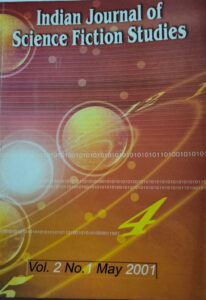
The Indian Association for Science Fiction Studies (IASFS) was launched on January 2, 1998 – the day coincided with the day of birth of Isaac Asimov and the completion of a century since the publication of J.C. Bose’s story “Agosh” which was a milestone in the history of Indian science fiction. The main goal of the IASFS is to provide help for science fiction research. The association also brought out a quarterly journal named Indian Journal of Science Fiction under the editorship of Dr. K. S. Purushothaman but it’s publication could not be sustained longer. The association has organized fourteen national and three world SF conferences in India till date.
The IASFS has collaborated with Mukthananda College, Gangapur, and MSP Mandal, Aurangabad, in organizing the 18th ISF/4th International Science Fiction Conference on 16,17 & 18th of October 2019 at Deogiri Engineering College, Aurangabad, Maharashtra. Dr. Balaji Navale played a key role in organizing events in this city.
Connecting with Other Countries
India was connected with the western world through the pioneering attempt made by the magazine 2001 from New Delhi in 1988. This magazine was the successor to Science Today, which was a prominent Indian popular science magazine from the 1960s to the 1990s. 2001 itself existed in the late 1980s and early 1990s, but the publication was discontinued even before 2001.
The 2001 team had an interview with Isaac Asimov over satellite. The event was carried out by Chandan Mitra (coordinator) Mukul Sharma (editor of 2001), and Jug Suraiya (Times of India). Since then Dr. Narhari has been regularly contributing to Locus about Indian sf events.
In the Asian sf conference held in 2018 in Beijing, China, Dr. Srinarahari and Dr. Bhise Ram represented India. For the international sf conference organized in Chengdu in November 2019 , Dr. Srinarahari, Dr. Arvind Mishra and Dr. Sami Ahmad Khan were invited to partake in the gala event. In November 2022 Mr. Dip Ghosh, editor of the sf e-magazine Kalpabiswa, represented the ISFWA on in 81st WorldCon held in Chengdu in 2023 and participated in discussions in several sessions.

Galaxies, a reputed French science fiction magazine, has featured works by Indian authors and dedicated special issues to Indian science fiction. This special issue featured a dossier on Indian science fiction edited by Arvind Mishra and Dip Ghosh.
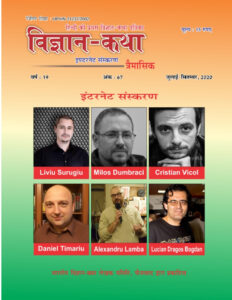
Cover of Vigyan Katha
The Hindi-language quartlerly sf magazine Vigyan Katha released a special issue focused on Romanian sf in July 2020 in collaboration with a project by Galaxia 42 magazine and the science fiction & fantasy club Sindicatul 9 from Timișoara. The issue was brought out with the support of Darius Hupov, editor of Galaxia 42, Dr. Arvind Mishra, founder secretary of the Indian Science Fiction Writers Association, and magazine editor Rajeev Ranjan Upadhyaya.

The European launch of the book The Space Cuckoo and Other Stories by Arvind Mishra took place online, on December 13, 2022 on Discord, at the international meeting of Syndicate 9 Science Fiction club from Timisoara, Romania. The guest of the meeting were the author and the moderator Darius Hupov along with sf enthusiasts from many countries.
These are just some of the many salient foreign collaborations which highlight the growing profile of Indian sf internationally and demonstrate cross-cultural literary exchange.
Challenges
There are some hurdles for the progress of Indian science fiction, the prominent one being the multiple languages in India in which sf is written.
Translating science fiction literature written in various languages remains a challenge. Regional and linguistic bias also hinder the emergence of a unified form of Indian science fiction literature. The joint sustained efforts of the Indian Science Fiction Writers’ Association and the Indian Association of Science Fiction Studies are in progress to address this issue.
Also, a lack of acceptance of sf by a majority of publishers, a limited number of science fiction writers and insufficient support and encouragement for writers are some of the reasons why there are few noteworthy sf works coming from the county.
Positive Trends
The boom of Indian science fiction is most pronounced in metropolitan cities and in some especially active states. In scholarly circles, doctoral degrees in science fiction have been bestowed to several researchers. The efforts of media in highlighting sf events are to be appreciated in India. In this regard, it gives positives signals for the younger generations’ perception of the genre. The Delhi based FM band radio has interviewed Dr. Arvind Mishra and Dr. Srinarahari. The All India Radio stations in Lucknow and Agra are airing many sf drama programs. Sf dramas were aired by AIR in the town of Dibrugarh also. The nation’s leading newspapers The Hindu, Times of India, The Deccan Herald, Amrith Bazaar Patrika, the Bangalore Mirror, Tehelka, and other mainstream news media regularly highlight sf events. Young people with innovative ideas are currently working in this arena. Progress has been remarkable as over the past four decades a number of special sf editions of magazines on occasion of the festivals Bihu, Durga and Diwali Puja have been published.
Indian science fiction aspires to join hands with the international sf community.
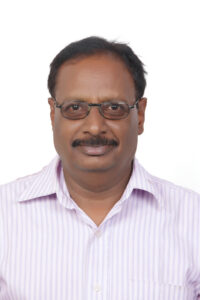 Dr. Srinarahari is the Secretary – General of Indian Association for Science Fiction Studies located at Bangalore, Karnataka India. This registered association was established in 1998 and it has organized 14 National and three International conferences. The author has conducted science fiction short writing workshops for all ages and levels. He is a writer, critic and a reporter for Locus from India. He has a doctoral degree in Science Fiction. After 47 years of lengthy service in Government and private Colleges as Principal, he is presently working as Principal at Animaster College, Bangalore, in India.
Dr. Srinarahari is the Secretary – General of Indian Association for Science Fiction Studies located at Bangalore, Karnataka India. This registered association was established in 1998 and it has organized 14 National and three International conferences. The author has conducted science fiction short writing workshops for all ages and levels. He is a writer, critic and a reporter for Locus from India. He has a doctoral degree in Science Fiction. After 47 years of lengthy service in Government and private Colleges as Principal, he is presently working as Principal at Animaster College, Bangalore, in India.
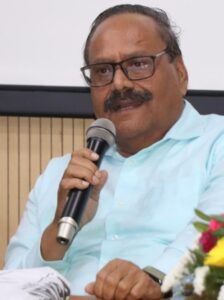
Dr. Arvind Mishra is a well known science fiction writer. He is the founder secretary of the Indian Science Fiction Writers’ Association. He has five Science Fiction collections and many science communication, popular science books to his credit, the recent one being The Space Cuckoo and other Stories, which got virtually released in Romania during the Covid crisis. He has presided over many workshops and conferences of science communication and science fiction in India and abroad. Chairing the science fiction session at PCST 2010, the 11th Global Science Communication Conference, Delhi, and representing India at the International Science Fiction Conference in Chengdu, China, (November 2019) are of special mention. He is coauthor of a comprehensive Indian Science Fiction Encyclopedia, published recently. He has received many honors, notably the National Vanamali Science Fiction Award from Rabindranath Tagore University, Madhya Pradesh, in 2024 and the Science Fiction Writing for Children Award from the Uttar Pradesh Hindi Sahitya Sansthan in 2017. He retired as UP Govt Public Servant in 2017 and now lives in his ancestral home in Jaunpur district.
